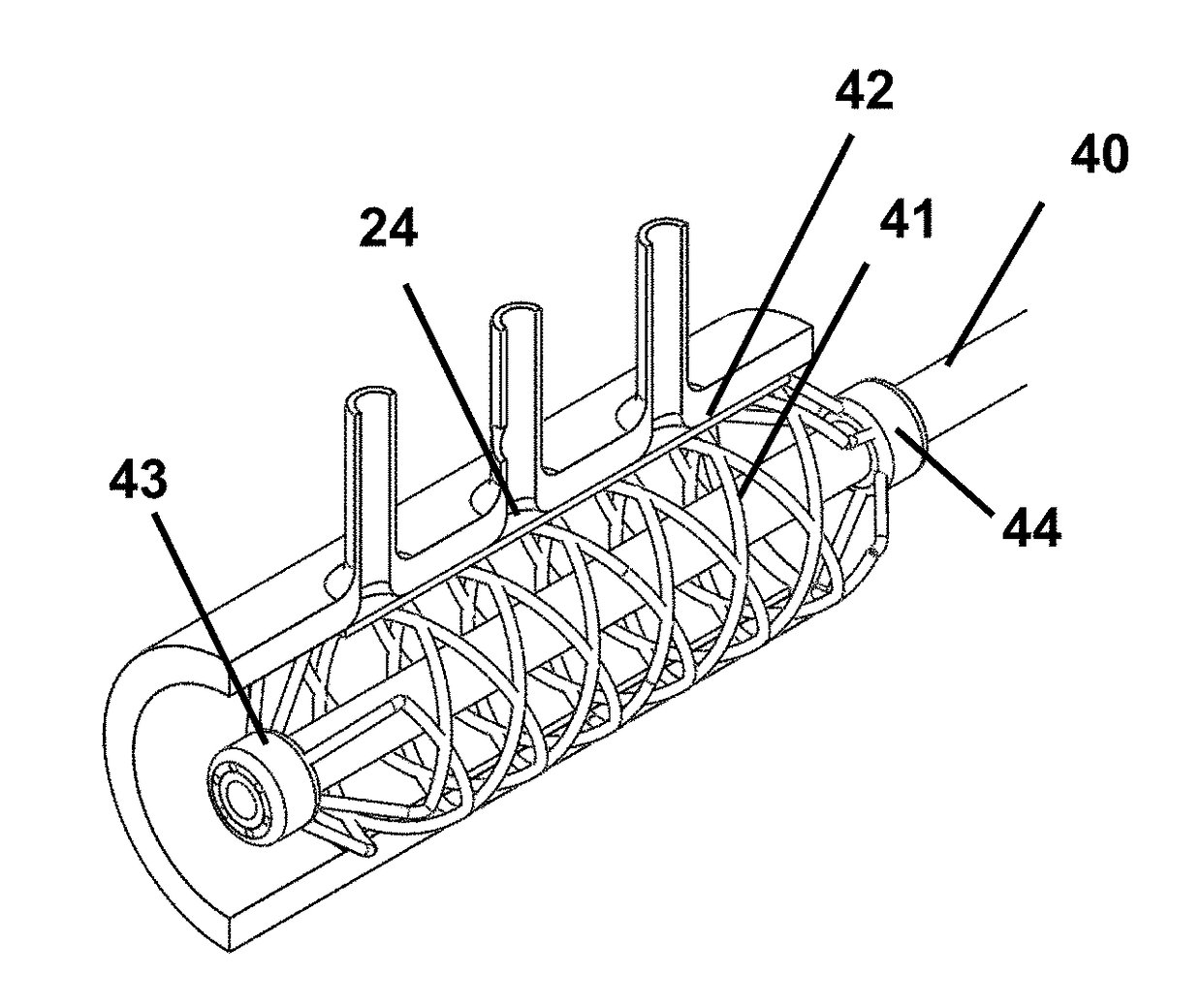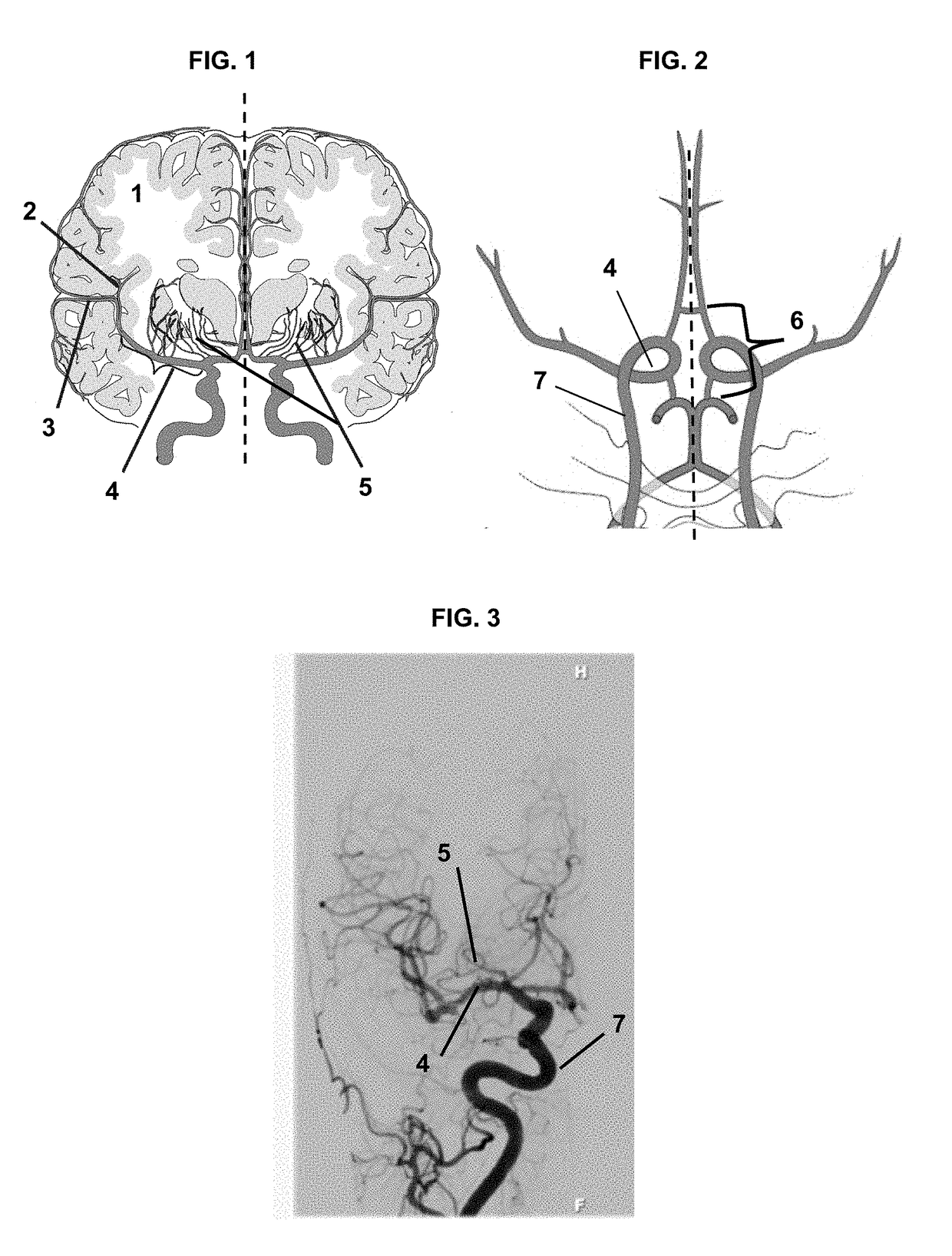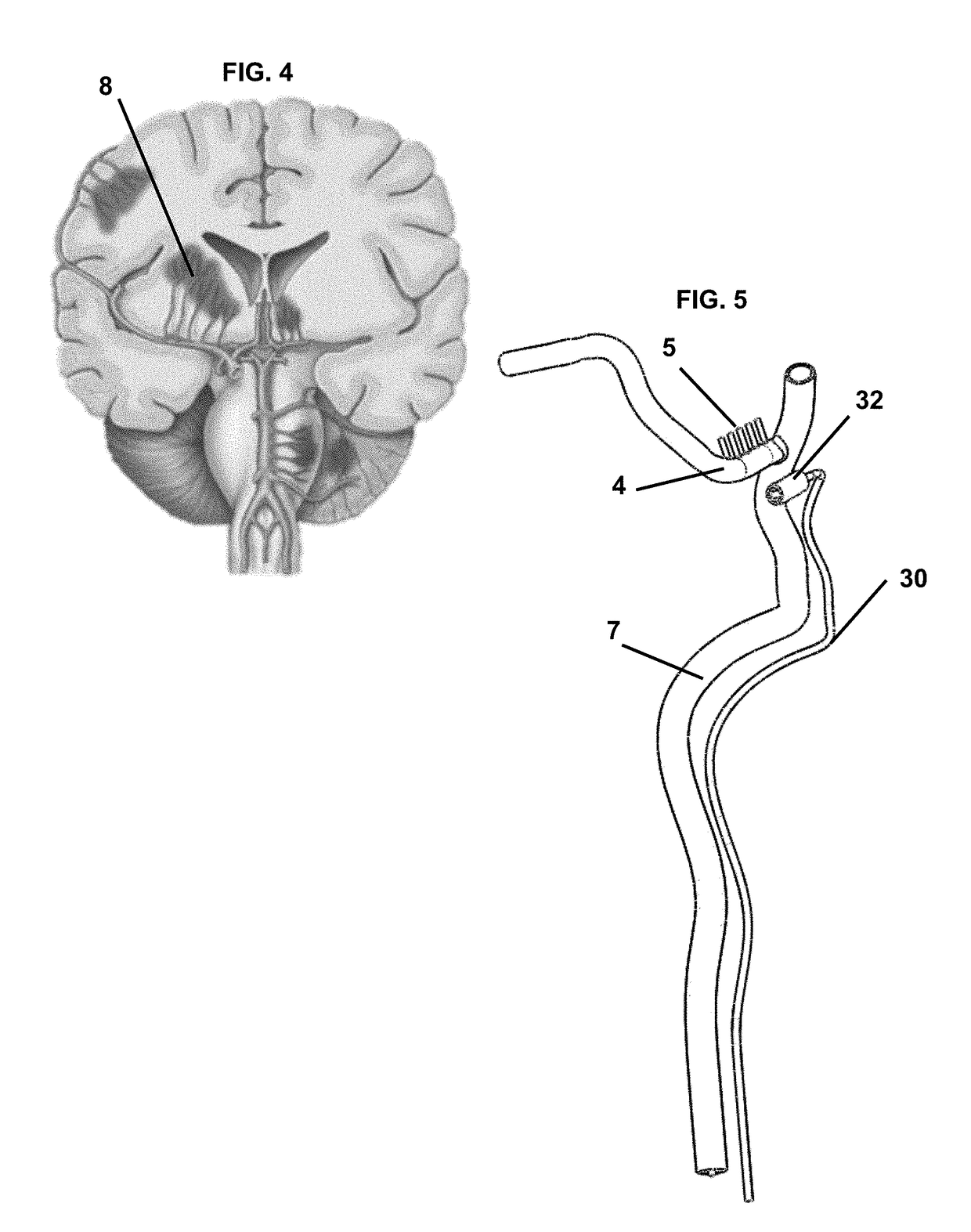Systems and Methods for Acute Treatment to Limit Intracerebral Hemorrhage Growth
a technology of acute treatment and intracerebral hemorrhage, which is applied in the field of acute treatment to limit intracerebral hemorrhage growth, can solve the problems of thrombosis sealing the bleeding vessel, reducing blood flow, and stagnant flow, so as to reduce the expansion of the ich, reduce the blood flow, and reduce the effect of blood pressure acting
- Summary
- Abstract
- Description
- Claims
- Application Information
AI Technical Summary
Benefits of technology
Problems solved by technology
Method used
Image
Examples
first embodiment
[0046]FIGS. 7 through 9 illustrate the occluding flow-through catheter device 30 delivered over a guidewire 31 with the hollow balloon 32 inflated through an inflation lumen 33. The balloon 32 is shown inflated against hemorrhaging LSA ostia 24 thereby occluding flow into hemorrhaging LSA while allowing flow through the central hollow portion 34 of the balloon 32.
[0047]The balloon 32 is pressurized to form an expanded cylindrical shape with a central conduit that allows blood flow without significant interruption. The overall structure of this balloon can be described as a toroidal (“hollow”) cylinder. Additionally, this entire structure is designed to allow for atraumatic deployment, tethering, and retrieval. The catheter may be constructed with a multi-lumen core, allowing for an independent conduit for infusion of the balloon while still enabling the passage of additional equipment such as a guidewire through the central lumen. Additionally, the catheter 30 can have a lumen for c...
second embodiment
[0048]FIG. 10 illustrates an occluding flow-through catheter device 40 in which a distal end of the catheter contains a mesh structure 41 in a collapsed state. The mesh structure is surrounding by a film 42 about its exterior. The film 42 may be hemostatic. The structure is grounded within a distal hub 43 and a proximal hub 44. FIG. 10 also shows a hemorrhage path 23 through an LSA. FIGS. 11 through 13 illustrates the mesh structure 41 in an expanded state, allowing apposition between the hemostatic film 42 and the hemorrhaging LSA ostia 24 thereby eliminating hemorrhaging path and allowing flow through its central hollow portion 46.
[0049]The mesh structural frame 41 can be comprised of a series of struts that can be expanded from a collapsed configuration via self-expansion, by a user driven deformation, or by a user activated shape memory deformation. In an embodiment, a proximal hub 44 may be longitudinally translated relative to the distal hub 43 expand and collapse the structur...
third embodiment
[0050]FIG. 14 illustrates an occluding flow-through catheter device 50 in which a distal end of the catheter 50 is surrounded by a collapsed hemostatic ribbon 51 grounded within a distal hub 52 and proximal hub 53. The hemostatic ribbon 51 extends helically about the catheter 50. Turning to FIGS. 15 and 16, rotation and / or longitudinal displacement of distal and proximal hubs 52, 53 relative to each other expands the hemostatic ribbon 51 allowing apposition against hemorrhaging LSA ostia 24 thereby eliminating hemorrhaging path and allowing flow through its central hollow portion 55.
PUM
 Login to View More
Login to View More Abstract
Description
Claims
Application Information
 Login to View More
Login to View More - R&D
- Intellectual Property
- Life Sciences
- Materials
- Tech Scout
- Unparalleled Data Quality
- Higher Quality Content
- 60% Fewer Hallucinations
Browse by: Latest US Patents, China's latest patents, Technical Efficacy Thesaurus, Application Domain, Technology Topic, Popular Technical Reports.
© 2025 PatSnap. All rights reserved.Legal|Privacy policy|Modern Slavery Act Transparency Statement|Sitemap|About US| Contact US: help@patsnap.com



